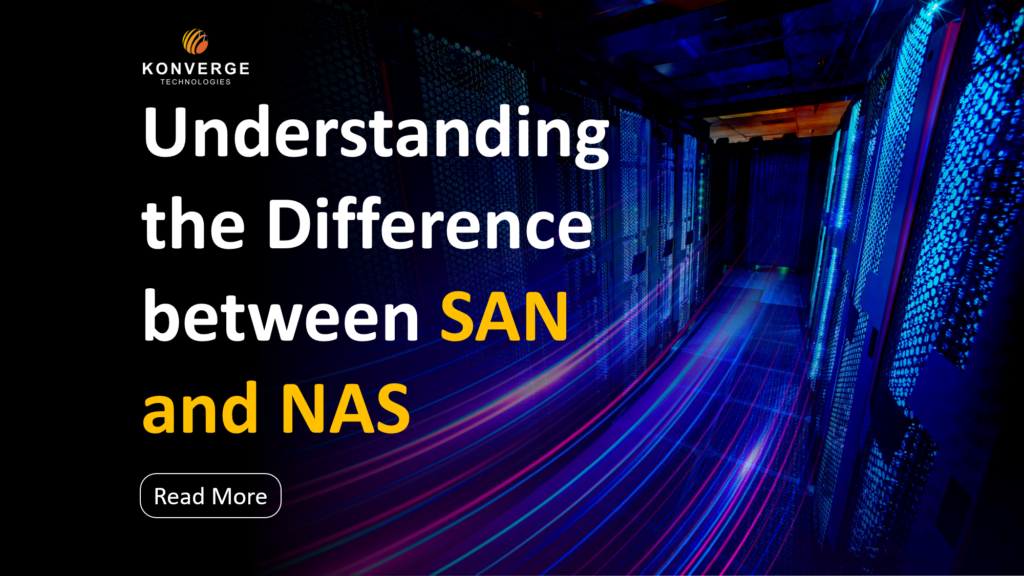
Understanding the Difference between SAN and NAS

Storage Area Networks (SAN) and Network Attached Storage (NAS) are two types of storage infrastructures that provide different features and benefits. While both allow users to store and access data, they differ in terms of scalability, performance, and cost. SANs are better suited for larger, mission-critical applications, while NASs are ideal for everyday file sharing and storage. SANs are typically more expensive and complex, while NASs are less expensive, easier to set up and manage, and more suitable for smaller organizations or home users.
What is SAN
SAN (Storage Area Network) is a dedicated high-speed storage device network connecting to servers and clients. It can store and manage large amounts of data and is typically used for large-scale, high-performance storage solutions. A SAN typically consists of one or more networked storage devices, such as disk arrays, tape libraries, and optical jukeboxes. The SAN is connected to servers and clients using Fibre Channel or iSCSI protocols. A SAN provides several benefits, including increased storage capacity, improved performance, increased availability, and better data security. It also allows for easier administration and maintenance of storage resources. SANs are often more expensive than NAS devices but offer more performance and scalability. Additionally, they require a dedicated high-speed network of storage devices; NAS devices, on the other hand, connect directly to a network.
What is NAS
NAS (Network Attached Storage) is a dedicated storage device that connects to a network. It is typically used for smaller-scale storage solutions, such as backing up or sharing files over a home network. A NAS device typically includes one or more hard drives and software for managing the data stored on the device. The software can also provide features such as RAID and data encryption. NAS devices are usually less expensive than SAN solutions but offer less performance and scalability.
NAS devices provide several benefits, including increased storage capacity, improved performance, increased availability, and better data security. They are also easy to install and configure, making them ideal for home or small business networks. Additionally, they connect directly to a network, while SANs require a dedicated high-speed network of storage devices.
What is the difference between SAN and NAS?
The main difference between SAN (Storage Area Network) and NAS (Network Attached Storage) is their network type. SANs require a dedicated high-speed network of storage devices, while NAS devices connect directly to a network.
SANs are typically used for large-scale, high-performance storage solutions that involve a large amount of data. They are often more expensive than NAS devices but offer more performance and scalability.
NAS devices are typically used for smaller-scale storage solutions, such as backing up or sharing files over a home network. They are usually less expensive than SAN solutions but offer less performance and scalability.
SANs provide features such as RAID and data encryption, while NAS devices typically do not.
In conclusion, SANs and NASs are two types of storage infrastructures that have different features and benefits. SANs are typically more expensive, complex, and better suited for larger, mission-critical applications. NASs are less expensive, easier to set up and manage, and more suitable for smaller organizations or home users. Both options offer users a way to store and access data, but depending on the organization’s size and needs, one may be better suited than the other. Ultimately, it is important to evaluate the organization’s cost, performance, scalability, and other requirements to determine which type of storage infrastructure is best for the organization’s needs.



